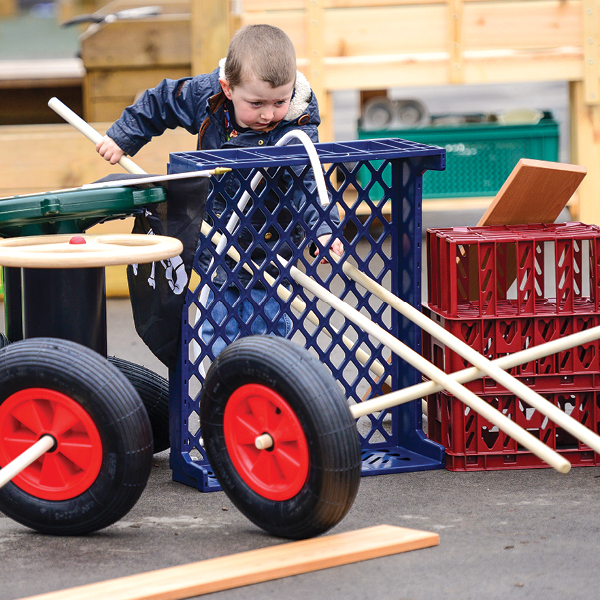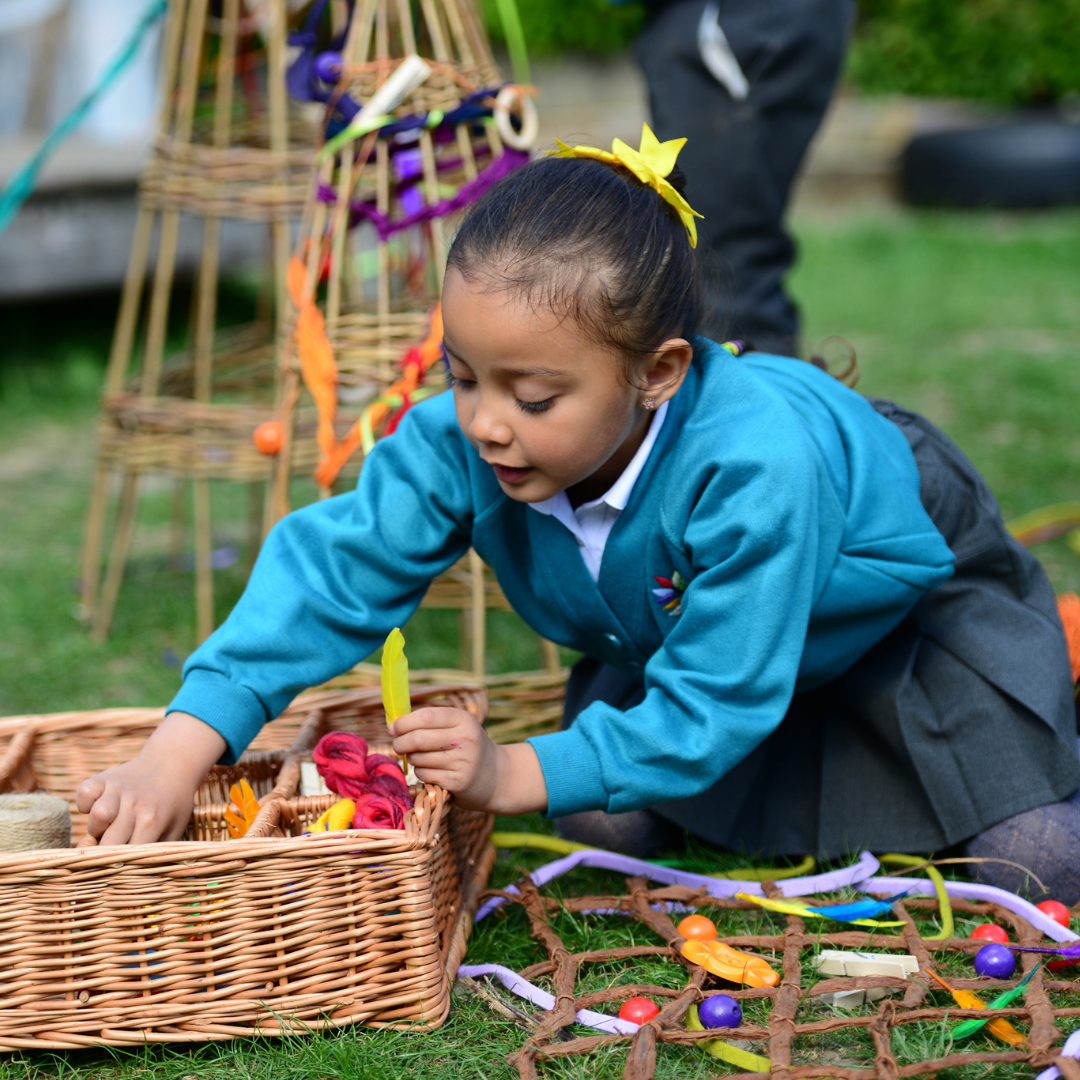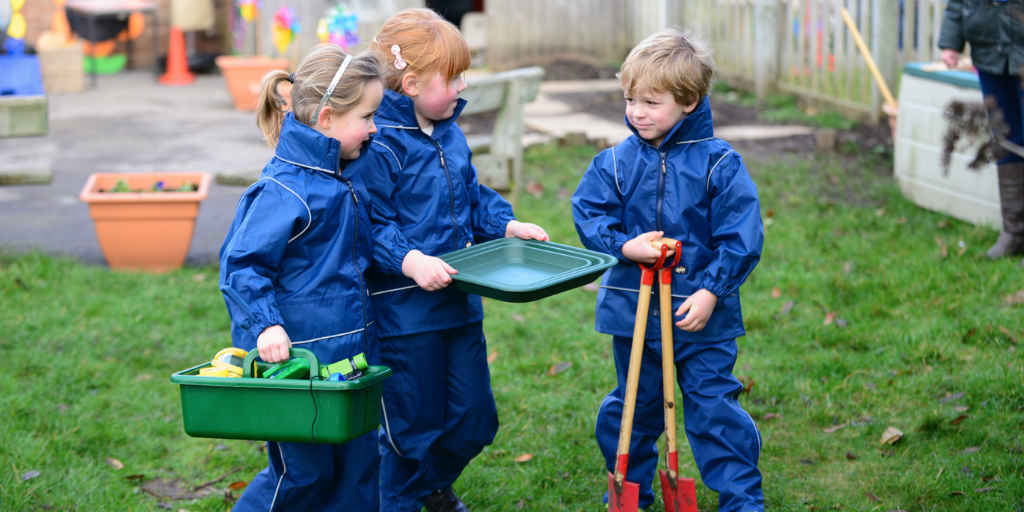What does your outdoor curriculum look like? Is it simply a replication of the indoors, or does it provide additional and unique experiences as it should?
This article is also available as a podcast:
The Outdoor Curriculum
Being clear about the learning taking place in your outdoor environment is critical and it is important to be able to articulate exactly what you have planned for your children outdoors and why.
Fortunately, this is not as difficult as it seems, as in the EYFS we are continually delivering a curriculum through the experiences we provide for children, the resources they use, the interactions that we build into their play and the moments of ‘direct teaching’ that occur throughout the day.
The curriculum is what is being taught and learned, and in the EYFS includes the acquisition of knowledge, but also most critically, it must enable the development and progression of skills, competencies and learning behaviours.
So, part of our challenge is how to ‘deliver’ this outdoors; what are the contexts that we can provide and how can these be built on to secure good outcomes for the children whom we work with and how can we ensure that in doing this we are explicitly conscious of the ‘curriculum content’?
The use of the outdoor area is a very good example of how to consider and reflect on how a curriculum (in its broadest sense) can be supported and delivered.
A typical outdoor environment should provide a range of experiences that help children to access different parts of the curriculum.
Of course, there are opportunities for refining and extending the control of gross motor skills and indeed a fundamental principle of using the outdoor environment is to provide precisely the opportunities that are not available inside.
There is clearly no point in trying to simply replicate the indoor environment, so developing the outdoors should start with that very question – how can I use the nature of this space to provide additional and unique experiences?
So, looking at those differences helps us to understand how to optimise its use, and also ensure that the curriculum content is explicitly understood.
1. Being outdoors means that you can do things on a bigger, grander scale than indoors
Construction can use large crates, long poles and wheels to create buildings and vehicles and big pieces of material to create dens and secret places.
It provides the opportunity to solve real logistical and engineering problems as structures rise and fall, reshape themselves with new resources and different ideas.
They can be as tall as you can reach and as wide as you can stretch. Unlimited by walls and ceilings, the sheer physicality of making something on this scale is only limited by imagination and ambition.
2. Noisy, boisterous and vigorous play is less of an issue when you are outside
Running and shrieking, chasing and catching, rolling and jumping are all not only entitlements of childhood, but essential to development and learning.
Unfettered by the understandable need to maintain an acceptable volume level when inside, these can be moments of sheer exhilaration, endorphin generating exuberance that celebrate being a child.
The necessary experience of becoming breathless, heart pumping and muscles aching through physical exertion, is only possible in an outdoor environment because it has the space and the limitlessness to do so.
This is why large-scale, energetic games are a key part of outdoors, played together with cones, dice, balls and hoops.
3. Outside is natural and messy
The weather is often in control of what happens. Puddles form in unusual places, rain creates and changes the consistency of mud, making it malleable and liquefied.
The wind mischievously scatters anything it can grab hold of, and frost, snow and fog change the ordinary into magical and mysterious landscapes of possibility.
Feeling the sun on your face, watching shadows form and disappear as clouds roll over the sky connects us all directly to the realities of the world.
The outdoors also invariably offers a multitude of experiences to explore weather and nature and a plethora of natural materials with their potential for play; fir cones and conkers become desirable treasure and autumn leaves an impromptu currency.
A stray pigeon feather becomes an unexpected object of sensory fascination and a spiderweb opens the world of how some animals live and survive.
So where is the curriculum in this?
Take any one of these examples and look at what is being learned during the experience.
Large-scale construction is gross physical – and lifting and using spatial awareness to place objects correctly is also part of understanding mathematics.
Feeling a heartbeat after running is the beginning of explaining how the body works.
Exploring the consistency of mud provokes language development and scientific enquiry.
All of these require the motivation, persistence and curiosity to ensure that the learning can take place.
This is the outdoor curriculum in all its glory!
If you’ve enjoyed reading these ideas, you might also like our Ultimate List of Mud Kitchen Ideas to help you maximise the potential of your outdoor muddy play area.
At Early Excellence we are passionate about inspiring young learners and committed to helping you develop the very best practice – so whether you are rethinking your outdoor space, equipping a brand-new area or simply adding new resources to extend the curriculum, we’d be delighted to help you. If developing the outdoor curriculum is a priority for your school, we have the perfect solution to support to you review and develop the use of your outdoor provision to strengthen teaching and learning across the curriculum in the EYFS and into KS1.
Find Out More

Explore our online programme Developing Effective Outdoor Learning EYFS & KS1 programme packed with training webinars, practical videos and support materials to deepen understanding and raise the quality of teaching and learning.

Develop your knowledge of learning through provision outdoors with our FREE Get Set for Outdoor Learning webinar or our Let’s Step Outside in the EYFS training webinar focussed on the key principles of effective learning outdoors.

If you are planning to develop your outdoor learning environment, then take a look at our EYFS & KS1 resources or download our Outdoor Audit Tool to assess the quality of the provision you already have and see where to make changes.
Related Podcast Episodes

